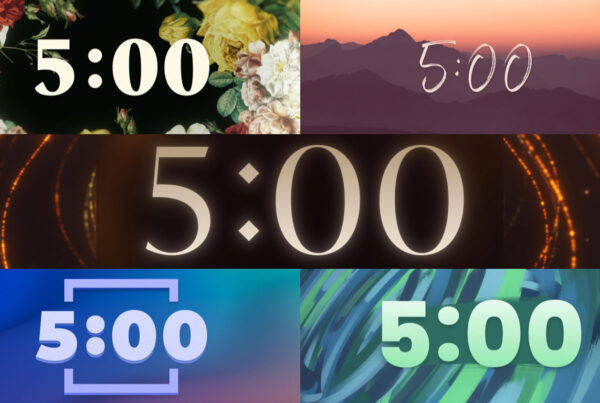
For $50 you can have a fully automated computer to display any type of content on a TV.
The Problem
I see it often asked, “Does anyone know a way that we can show promotional “slides” or graphics on an LCD tv screen in our foyer/hall?”. The “right” way to have digital signage cost much more than most small churches can afford to pay/budge. Often people suggest a number of good cheap alternatives. Some of those include buying a multimedia box of some sort, i.e. Apple TV, Google Chrome Stick, ROKU, etc.
I have used an Apple TV and found that while it does work, it can be fairly “glitchy” due to connectivity issues over a wifi network (if it was hard wired it may have been better).
The other options of using a google account where you can create a picture gallery and then tell your Google Chrome Stick to play as a “slideshow” is another option I’ve seen suggested. That’s a reasonably cheap alternative as well.
The downside to both of those options, in my opinion, is that they aren’t quite a “set it and forget it” type of option. Maybe it’s just that we have gotten too lazy with all the technology available to us, that for me, having to ensure that the device is always connected to the wifi network without issue (which we all know that the wifi will be good all week until Sunday morning when you’re ready to show off the new digital signage you spent time setting up!), ensuring that the device doesn’t go to sleep and start it’s own slideshow, or even having the ability to have it play videos and photo files together (I’m pretty sure none of the media options I’ve listed so far can do that). Apple TV only allows you to set a folder of photos and set how long each picture should display for before advancing. I’m not sure about the Chrome Stick.
Another option for using those media devices is to stream/screen share a computer desktop to them. This would allow you to use some other presentation software to create your content and then cast it to the media stick/tv. This option works (I’ve done it), BUT you are doing two things: Relying on your wifi network (if it goes down so does the screencast) and you are putting more strain on your wifi network (most likely during already busy network times) by doing a screen share.
Those options work, but let me share what I’ve found to work effortlessly for around the same price as the above listed or in some cases even cheaper!
The Solution
The personal computer has gone pocket-sized with the Android Computer! This device allows you to download google apps and then use it’s HDMI output to show on your display of choice. It has two full-size USB inputs for a keyboard and mouse to be hooked up (for setting up the computer settings). It also has an HDMI output (it comes with a short HDMI cable). This computer once hooked up to the internet (wifi) will allow you to download a couple of apps that will turn your display into excellent digital signage!
I’ve listed below what you need to purchase to make this all work.
If you don’t already have a Google account go ahead and create one.
If you don’t already have a Dropbox account go ahead and create one.
Android Setup
When you get your Android computer in hand, go ahead and hook up a keyboard and mouse and then plug the HDMI into your display. Once your Android computer powers up it will ask what view you want as your start up menu. You can select either option and say “just this once”. Go ahead and check out the settings once the home screen is available. Connect to your wifi network. Sign in to your google account (either in settings or via the web browser option).
Google Play Apps
Now visit the google play store and download three apps. The first app to download is the Dropbox app. Go ahead and sign in to your Dropbox account. The second app to download is Drop Sync. This app will take a folder you select from Dropbox and store those files locally on your device. Dropbox alone views the data remotely and doesn’t store the files on your device. Drop Sync fixes that for the selected folder of your choice. The third app is called “Video Kiosk”. The app is free to download and test, but to remove the watermark; you must purchase it for $15 (well worth it to make all this work!)
Go ahead and open the app Drop Sync (I’m assuming you already logged in to Dropbox). Once in Drop Sync go ahead and select the Dropbox folder you want to be synced. Drop Sync will create a generic folder when it first starts up but go ahead and search the device for the Dropbox folder you want. This folder will eventually contain the media you want to be displayed. Once that is selected in Drop Sync you can tell it, under settings, to sync every 5 minutes (or whatever interval you want). You don’t have to have it sync that often, but I wanted to be able to update it fairly quickly on the last minute update during a Sunday morning. You can do a manual sync whenever you’d like, but that requires you to have a keyboard set up (which eventually you won’t want hanging off your display). Finally, open up the app “Video Kiosk”. You then select which folder you want video kiosk to display. Select the Drop Sync folder (this is the folder that Drop Sync has made which contains the locally stored files from the Dropbox folder you chose earlier – confused yet?!) Now right away you should see your dropbox files displayed inside of the app Video Kiosk. If it’s not working maybe there are no files in your Dropbox folder or Drop Sync hasn’t yet synced up with your Dropbox folder. If that’s the case, go back into drop sync and do a manual sync. Watch to ensure that it synced all the files from your Dropbox folder.
Video Kiosk Setup
Now the cool part. Go into Video Kiosk preferences/settings. Set it up, however, works best for your application. We found that the option to have the promo graphics display for 7 seconds works well and that we wanted the computer stick to reboot once a day (for stability purposes). We also set video kiosk as the home app so that when the computer restarts it automatically re-enters the Video Kiosk app which immediately plays your files! It plays mp4 video files and most photo files without any issue! If for some reason video kiosk doesn’t recognize a file format it will automatically skip over the data without delay. If the video kiosk has too many errors (we haven’t experienced this yet) it will automatically reset the video kiosk app. Once all of this is set up, you quite literally have set it and now can forget it! The drop sync app will continue to sync with the folder from Dropbox that you selected and video kiosk will keep adding and playing any files in that folder. The auto reboot every day will help the computer stability over time. Just turn your display off and on when you want the graphics/video to display. No hassle with the computer stick again. Now you can add files via your smartphone dropbox app or any computer logged in to Dropbox. What we like best about this setup is that the machine is “smart” enough to fix itself. It does this by rebooting if it notices to many errors or by skipping over files it doesn’t recognize. If it ever disconnects from our wifi network or if the wifi network goes down it will continue to play the local data from the last sync which in most cases is ok on Sunday morning.
Make It Happen
If you had small displays around the facility, you could get this Android computer for each of them. The apps are already purchased so that is not an additional cost. You could set each android computer to sync to a different folder. This would allow you to create signage specific to the location of the display. A lot of options here!
Written by Matt Grayum from Life Source Church






